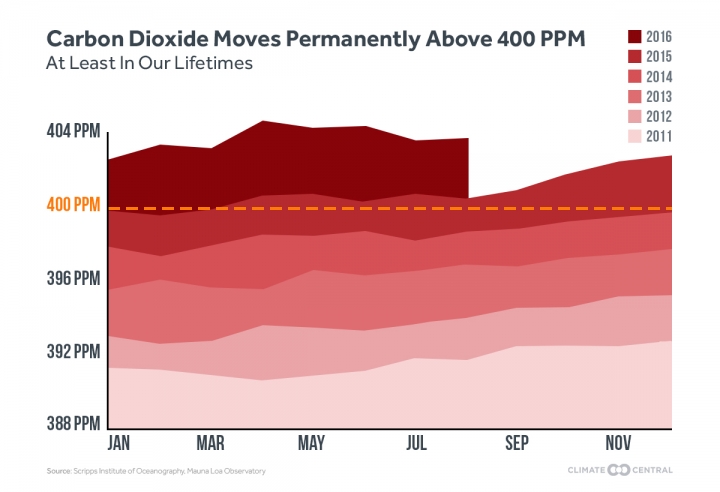It’s official. Carbon dioxide (CO2) levels around the world have passed the 400 parts per million (PPM) mark.
The last time greenhouse gases were this high was roughly 4 million years ago. For millions of years earth’s natural balancing act was able to regulate the amount of CO2 in the atmosphere. However, things starting sliding south with the Industrial Revolution. The meteoric rise of CO2 in just the past few decades has been propelled by the burning of fossil fuels, the cutting down of forests, and numerous other human activities.
What’s so bad about CO2?
At the current rate of production, the earth is overwhelmed and thrown all out of whack. Greenhouse gases, like CO2, trap heat in the earth’s atmosphere, resulting in numerous deleterious effects: average air temperatures rise, ocean acidity increases, droughts, coastal flooding, etc. And like a rude party guest, once CO2 enters the atmosphere, it just won’t leave.
“Carbon dioxide is the most important long-lived global warming gas, and once it is emitted by burning fossil fuels such as coal and oil, a single CO2 molecule can remain in the atmosphere for hundreds of years.”
Ralph Keeling, a researcher at the Scripps Institute of Oceanography.
Sounds pretty grim.
Fortunately we humans are an industrious group and a few of us (looking at you environmental scientists) are toiling away trying to solve this riddle. For instance, Stanford University is investigating net-negative technologies that capture and store CO2. The CarbFix Project in Iceland, in collaboration with Columbia University, is investigating permanent CO2 storage in basalts. However, most pundits agree that sucking CO2 from the atmosphere alone is not enough. The other half of the equation is utilizing more sources of renewable energy, superabundant reforestation and reducing the copious amounts of CO2 produced in the first place.
“The more diffuse emissions like from jets, cars, et cetera, is going to be more complicated, but still 40 percent of the emissions could theoretically be captured and stored in rocks.”
Siggi Gislason, CarbFix Project
Ten other negative emissions technologies for removing CO2:






